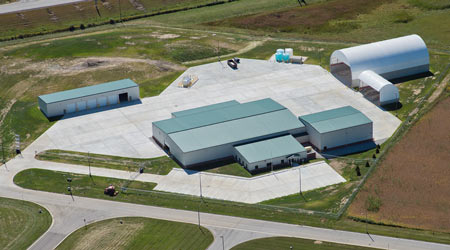
Ohio Department of Transportation (ODOT) Uses Facility Master Planning For Space, Energy Efficiency
May 24, 2016
Throughout its 110-year history, the Ohio Department of Transportation (ODOT) has touched the lives of every Ohioan. The state’s residents and businesses depend on ODOT’s integrated transportation network to connect goods to markets, workers with jobs, people to health care and education, and families with loved ones and home.
With facilities in all 88 Ohio counties, more than 5,000 employees and an annual budget of more than $2 billion, ODOT is responsible for the state’s largest and most valuable man-made asset – roads and bridges – worth $22 billion.
Like roads and bridges, ODOT’s facilities require routine maintenance and, in some cases, replacement.
“Many of our garages and outposts pre-date Ohio’s interstate system,” says ODOT Director Jerry Wray. “As our fleet has grown in size and number and our workforce has been reduced, it became necessary to take a hard look at replacing, consolidating and eliminating some of our facilities.”
With the help of William Ramsey, chief of planning at the Ohio Facilities Construction Commission, ODOT’s Office of Statewide Facilities Operations took a unique approach in doing just that.
“Beginning in 2011, we worked with the users of our garages and outposts and ODOT leadership to put together a master planning process to provide a systematic method for gathering and analyzing facility information,” said ODOT Deputy Director Steve Masters who oversees the office. “This information helped us make effective and logical decisions regarding design, location and function of future ODOT facilities.”
The process for developing ODOT’s Facility Master Plan began with identifying facility-related goals to optimize, such as reducing the size and number of facilities by consolidation, shared facilities or closure; reducing utility costs, increased use of less-expensive yard facilities and the development of more efficient alternatives.
“We took a map of Ohio with all of ODOT’s facilities on it and we removed the dots,” Masters said. “Then we asked the question ‘where do we need facilities.’ We took into account future growth areas, like housing developments, so we wouldn’t build there.”
ODOT’s master planning process allowed the department to plan and prioritize the replacement of antiquated and deficient full service maintenance facilities and outposts without regard to boundaries and other past restrictions.
Ramsey said although no two master plans are the same, the process for developing one is. “Whether you’re a university, a school district or a public institution, the first step in developing a master plan is to understand how your organization functions and determine your needs.”
In ODOT’s case, the department looked 50 years out. “ODOT is ever-evolving,” Ramsey said. “We know equipment gets larger and larger and so do the salt barns. Staffing levels may change so we determined a ‘kit-of-parts’ facility would work best. ODOT can add buildings or make them larger as they see fit.”
ODOT’s master planning process resulted in the construction of 17 new facilities; 13 are currently underway and 12 more are scheduled for fiscal years 2017 and 2018. ODOT is sharing space with local governments and a major university.
The benefits of ODOT’s master planning process are many, including a reduction of full service and outpost facilities through the use of unstaffed yard facilities in strategic locations; reduction of the overall square footage of facilities statewide; reduction in the cost-per-square-foot for new construction; increased energy efficiencies; reduction in project development costs through partnering alternatives and increased opportunities for innovation.
“ODOT has embraced Ohio Governor John Kasich’s initiative to have government share its facilities,” Masters said. “During the planning process we ask ourselves who else could benefit from our facilities.”
According to Masters and Ramsey, a master plan is never finished. “You can’t put it on a shelf and walk away,” Ramsey said.
This QuickRead provided by Joel Hunt, Public Information Office for the Ohio Department of Transportation, Division of Communications.
To read more about master planning, check out this article on its value and how to create various types of master plans.
Next
Read next on FacilitiesNet












